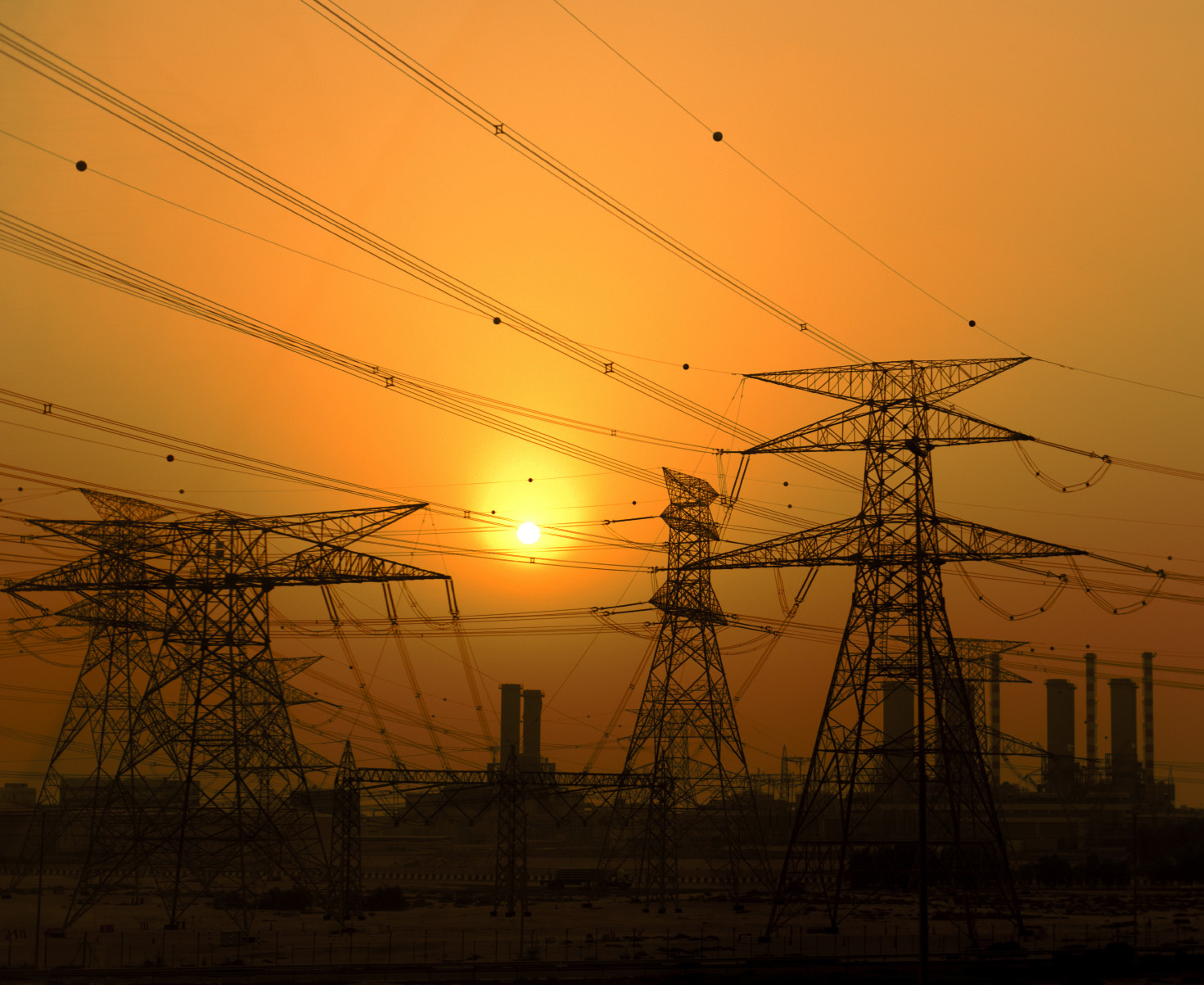The VAEEC has been focused on advancing Commercial Property Assessed Clean Energy, or C-PACE, financing across the Commonwealth for the past few years. Since Virginia’s C-PACE law requires interested localities to develop and implement their own C-PACE program, start up can be on the slow side. However, we’ve seen a lot more traction lately thanks in part to the launch of Virginia’s first C-PACE program (in Arlington County) and the recent release of C-PACE resources for local governments.
Program Status in Virginia
Over 30 states and Washington, D.C. have approved C-PACE programs. Virginia joined this growing list in 2009 when it first passed C-PACE enabling legislation, which was later amended in 2015. Our C-PACE law includes all new and existing commercial, industrial, multifamily residential (over four units), and nonprofit buildings.
Arlington County’s C-PACE program officially launched in January of this year with the goal of improving new and existing buildings and helping the County’s Community Energy Plan implementation. Sustainable Real Estate Solutions, or SRS, was selected as their independent, third party program administrator to provide marketing, outreach, education, and quality assurance services.
During a January 2018 Board meeting, the Loudoun County Board of Supervisors unanimously voted to direct staff to develop a C-PACE program structure, evaluate options for Program Administration, and draft an ordinance. These items will be brought back to the Board at a future meeting for consideration. Similarly, Fairfax County is exploring the development of a C-PACE program. County staff are developing information for the Environmental Committee with the goal of presenting their findings to the Committee at their next meeting on June 12th.
In addition to providing educational information to Loudoun and Fairfax, the VAEEC is working with several other jurisdictions to answer questions and help with program development. Just last week, we worked with the City of Virginia Beach to organize a C-PACE informational session for all municipal staff in the Hampton Roads region. Representatives from the Cities of Norfolk, Portsmouth, and Virginia Beach were in attendance. We are also working with local Virginia chapters of the Sierra Club to host a C-PACE event on May 30th in the City of Alexandria. This event will be open to all C-PACE stakeholders in the area, including property owners, contractors, lenders, and municipal staff. We also continue to work with the City of Charlottesville and Albemarle County to answer staff questions and provide guidance on the resources currently available to localities.
Resources for Local Governments
In early 2018, the VAEEC released a Virginia model ordinance for localities to use when crafting their own program. The ordinance was commissioned following a review and input from a wide variety of C-PACE experts in the lending, local government, engineering, legal, and policy fields. This document incorporated key factors that we consider to be crucial to implementing an effective C-PACE program.
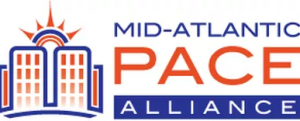
Accelerating C-PACE throughout DC, MD, & VA
As part of its mission to accelerate the development and utilization of C-PACE in the Mid-Atlantic region, MAPA is currently creating program implementation guidance. These regional guidelines will be a part of a toolkit created to help localities craft their own C-PACE program and is slated to be released by June. In conjunction with MAPA, the VAEEC will be hosting a C-PACE webinar in September that will walk attendees through both this toolkit and the Virginia model ordinance.
Virginia localities may review the program infrastructure implemented in Arlington County, including the County ordinance and other program documents. There is also the option to “ride” the C-PACE Program Administration contract with SRS, which would eliminate the need for a Request for Proposals (RFP) process and shortens the time to program launch. Localities may also contract directly with SRS if cooperative procurement is not preferred. Explore the Arlington C-PACE website for more information.
The VAEEC prides itself on being a neutral, trusted resource for any Virginia localities interested in C-PACE. We are actively meeting with local governments across Virginia to discuss all available options and help each locality determine which option best suits their needs. If you would like to know more about C-PACE, contact Jessica Greene at jessica@vaeec.org.
We hope that you were able to join us last week at Clean Energy Lobby Day. It was great to see so many familiar faces in the building talking with their legislators about the importance of energy efficiency!
 This week brings us to the halfway mark- or “crossover”- for the 2016 General Assembly session. All of the energy efficiency bills we are tracking have been heard in their respective committees. Below is a rundown on their statuses. For a summary of each of these bills, check out our legislative tracker.
This week brings us to the halfway mark- or “crossover”- for the 2016 General Assembly session. All of the energy efficiency bills we are tracking have been heard in their respective committees. Below is a rundown on their statuses. For a summary of each of these bills, check out our legislative tracker.
- HB 352 (Del. Ware). At the request of the patron, this bill was carried over until next session.
- HB 1053 (Del. Kilgore). After several deliberations with stakeholders and a robust discussion during the committee hearing, this bill looks very different than the original. The bill directs the SCC to study the potential for establishing uniform EM+V protocols for reporting the impacts of utility energy efficiency programs. This bill narrowly made it out of committee with an 11-to-9 vote.
- HB 1174 (Del. Sullivan). This bill was a late addition to our legislative tracker. After working with the patron and some of our members on slight language modifications, we were able to give this bill our full support. Using a common phrase heard around the General Assembly building, after finding “peace in the valley”, this bill passed out of committee.
- SB 395 (Sen. Alexander). This bill came up in committee on Monday and is the companion bill to HB 1053 (they are the same bill in separate chambers). This bill passed out of committee as well.
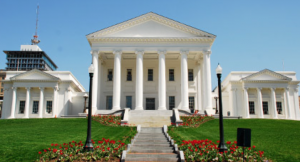 All of the bills above that made it out of committee have also made it out of their respective chamber. Today marks “crossover”, which means that each chamber- house and senate- can only take up bills from the opposite chamber. In essence, we start fresh tracking our bills and testifying on them before their respective committees.
All of the bills above that made it out of committee have also made it out of their respective chamber. Today marks “crossover”, which means that each chamber- house and senate- can only take up bills from the opposite chamber. In essence, we start fresh tracking our bills and testifying on them before their respective committees.
Stay tuned for more updates as the session continues through March 12.
Guest Blogger: Chase Counts, CHP Energy Solutions (VAEEC Member – Business Gold)
January 20, 2016

Energy efficiency programs and policies in Virginia have historically favored detached, single-family homes over multifamily housing. For a brief period around 2009, weatherization funds were used on affordable multifamily housing following the influx of federal stimulus money under ARRA; but currently, Virginia’s weatherization program only serves single family housing and only around two-percent of utility funded residential efficiency programs in Virginia go to multifamily housing. Beyond that, few resources have been available to the 385,000 Virginia households residing in affordable multifamily buildings representing about twelve-percent of the commonwealth’s housing stock.
Affirming this imbalance, the national Energy Efficiency For All project identified Virginia as one of 12 states that could cost-effectively increase energy efficiency in the affordable multifamily sector. Leveraging the established reputation and network of Virginia Housing Alliance to lead the charge, a cross-sector group of energy efficiency advocates, weatherization providers, affordable housing providers, and environmental organizations gathered to form the Virginia Multifamily Energy Efficiency Coalition (MFEEC).

The mission of the Coalition is “advancing policies and programs that provide comprehensive energy efficiency services to Virginia’s multifamily affordable housing stock.” The group has set a goal of “25 / 25 / 2025,” which means the coalition will support policies and programs resulting in an average energy savings of 25-percent or greater in 25-percent of the affordable multifamily housing stock in Virginia by 2025.
The Coalition has identified the following opportunity areas to advance towards their goal:
- Weatherization Assistance Program (WAP)
- Utility driven energy efficiency programs
- Legislature
- State Administration
- Financing Mechanisms
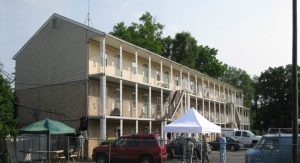
Credit: CHP Energy Solutions Research and Training
Since the inaugural meeting in October 2015, Coalition members have established a presence in each opportunity area. Most recently, weatherization service providers participating as contractors for Dominion Virginia Power’s (DVP) prescriptive energy efficiency programs requested the Coalition represent their interests in a negotiation with DVP regarding extending funds to assist with addressing health and safety issues. The Coalition garnered consensus with the providers and submitted a proposal under consideration by DVP currently. A resolution is anticipated early in 2016 that will help keep Virginia households participating in the DVP programs safe and with peace of mind.
The Coalition has also established a work plan to ensure productive discussions turn into meaningful actions with tangible results. The first initiative is establishing a scorecard to track the progress of reaching the goal of reducing the energy burden of nearly 100,000 households within the next 10 years. The second initiative is to host an event in 2016 that will bring together the energy and housing sectors in Virginia and begin to amplify the foundational efforts of the Coalition.
The goals put forward by the MFEEC are ambitious but attainable. The members are driven, passionate, and collectively understand the various policy, regulatory, and technical obstacles and complications that come with a mission of safely and cost-effectively improving energy efficiency of affordable multifamily housing by 25-percent.
If you are interested in becoming a member or for additional information about MFEEC, please visit the website at www.vamfeec.org or contact Zack Miller at zmiller@vahousingalliance.org.
 Guest Blogger: Abby Johnson, Abacus Property Solutions (VAEEC Member – Individual)
Guest Blogger: Abby Johnson, Abacus Property Solutions (VAEEC Member – Individual)
January 19, 2016
This year, Virginia Community Capital received a grant from the Oak Hill Fund to explore implementation of PACE financing in Virginia. As part of this grant, VCC held an initial stakeholder meeting on July 14, 2015 where attendees heard about the new PACE law that went into effect on July 1, 2015 as well as from guest speakers from other states. On December 8th, Virginia Community Capital (“VCC”) held the final Virginia PACE Financing stakeholder meeting at the Trane facility in Ashland. At this meeting, the Department of Mines, Minerals and Energy (DMME) gave an overview of the new PACE financial underwriting guidelines that went to effect December 1, 2015 and Rich Dooley, of Arlington County gave an update on Arlington’s plans to issue an RFP for a program administrator. Then I joined Neal Barber of Community Futures to present the findings from our grant research. Afterwards, attendees broke out into groups to discuss these recommendations and offer their insights.
As a seasoned executive within state and local governments for 40 years, Neal was selected to interview local elected officials and staff from across Virginia. During the fall, Neal met or spoke with 35 jurisdictions to gauge the level of knowledge and interest in participating in a PACE financing program. For the most part, his research revealed that few jurisdictions were currently aware of PACE with the exception of those with dedicated sustainability officials. Although there was definitely interest in the concept of PACE as an economic development tool, top conclusions from these interviews revealed that there is a:
- Need for significant education to different parts of a locality’s staff to explain how PACE would impact them
- Benefit to engaging a local champion to push PACE as a priority item within a locality
- Interest in a centralized “plug and play” program
- Preference for seeing how PACE is adopted in other jurisdictions before taking the proverbial plunge.
Given my deep knowledge of PACE programs around the country and extensive work in Virginia, I was asked to analyze national best practices and develop an initial set of recommendations for our state. Some highlights include:
- A minimum annual project volume of $10-20 million is needed to sustain a PACE program, assuming upfront ongoing administration fees are the primary source of funding for the administrator.
- Most successful programs have or had internal funding or financing structures such as the Green Bank in Connecticut.
- Successful programs tend to be located in areas with high utility rates, robust incentive structures, and/or higher energy usage such as California and Connecticut.
- The cost to develop (set-up and implementation) a PACE program is estimated to be $500K to $1 million for a full service program administrator.
- Although smaller projects (under $300k) represent a major source of deal flow, the costs to both the program administrator and the building owner are often prohibitively high and must be streamlined to be a viable product line.
- Education is key and must be a major budget item both to convince localities of the program’s value and to train key channel partners.
Although much more research is required to develop a detailed implementation plan, some initial recommendations include:
- Develop a P3 platform through alignment with a new or existing statewide entity with a standardized set of documents and procedures such as: model ordinance, underwriting criteria, and vetted contractors and capital providers. This state-level entity would partner with regional and local institutions to leverage existing relationships and marketing infrastructure.
- Prioritize two or three localities with the maximum potential for the first year.
- Identify creative ways (such as job creation/training grants) to provide the program administrator with funding that generates a healthy pipeline quickly.
Arlington County is forging ahead with developing a PACE program. This past week, Arlington held the first of several planned discussions on the benefits of PACE to local stakeholders – this one geared toward commercial real estate lenders. I, along with Arlington’s Rich Dooley, fielded many thoughtful questions during this lively discussion, demonstrating first hand the absolute importance of education when introducing a new product to the market.
Related Post: PACE is finally here in Virginia (June 2015)
Four Members Also Serve on VAEEC Governance Board
The Virginia Energy Efficiency Council (VAEEC) is pleased to share the news that today Gov. McAuliffe appointed the members of the new Governor’s Executive Committee on Energy Efficiency. The Committee was created by the governor as part of the Virginia Energy Plan published in October, and it will be chaired by the state’s Chief Energy Efficiency Officer, Hayes Framme. The Committee is tasked with developing strategies to meet the state’s longstanding voluntary goal of reducing energy consumption in Virginia by 10% over 2006 levels by 2022 – a deadline that the governor has indicated should be moved up to 2020.
Statement by Ken Rosenfeld, VAEEC Executive Director:
“The creaton of the Governor’s Executive Committee on Energy Efficiency reflects the administration’s commitment to making energy efficiency a pillar of the Commonwealth’s energy future. The VAEEC applauds Governor McAuliffe for appointing this impressive group to accomplish its important work. The state’s 10% energy efficiency goal has been on the books for years, but without any plan to achieve it. This Committee has enormous potential to move energy efficiency forward in the Commonwealth, and to meet our efficiency goal in a way that generates significant benefits in terms of energy savings, financial savings, and job creation. The roster includes four VAEEC Governance Board members — Cynthia Adams, Bill Greenleaf, David Koogler and Saifur Rahman – and many other VAEEC member organization are represented as well; in total this is a remarkable collection of individuals who understand these issues in great detail. We look forward to working with the Committee to help ensure that every perspective is considered and to support its work in any way possible.”
Read the governor’s announcement.
The full list of appointees to the Governor’s Executive Committee on Energy Efficiency:
- Cynthia Adams of Charlottesville, Executive Director, Local Energy Alliance Program (LEAP)*
- Ken Barker of Richmond, Vice President, Customer Solutions & Energy Conservation, Dominion Virginia Power
- Carol Davis of Blacksburg, Sustainability Manager, Town of Blacksburg
- Jim Fawcett of Charleston, West Virginia, Manager, Energy Efficiency & Alternative Energy Initiatives, Appalachian Power Company
- Bill Greenleaf of Richmond, Loan Officer, Virginia Community Capital, Inc.*
- David Koogler of Hanover, Vice President, Customer Services, Rappahannock Electric Cooperative*
- Angela Navarro of Charlottesville, Staff Attorney, Southern Environmental Law Center
- Michele Peterson of Richmond, Senior Energy Business Consultant, Honeywell
- Bill Prindle of Charlottesville, Vice President, ICF International
- Saifur Rahman of McLean, Joseph Loring Professor and Director, Advanced Research Institute, Virginia Tech*
- William Reisinger of Richmond, Assistant Attorney General, Office of the Attorney General of Virginia
- Dana Wiggins of Richmond, Responsible Lending Coordinator, Virginia Poverty Law Center
*VAEEC Governance Board Member
The Virginia Energy Plan Released.
The Virginia Energy Efficiency Council (VAEEC) applauds Gov. Terry McAuliffe’s Virginia Energy Plan, released on October 1. As the Governor says in his opening letter, “the cleanest and cheapest energy is the energy that is not consumed,” underscoring the central role energy efficiency will play in the Commonwealth’s energy future.
The plan is intended to provide a strategic vision for energy policy in Virginia, providing a comprehensive view of current assets and future opportunities. It will be formally presented at an event October 14, will be explored in detail as a featured agenda item at the VAEEC Fall membership meeting, which will be held two days later in Richmond. The meeting is open to everyone; click here to register.
Read the VAEEC’s full response to the Virginia Energy Plan.
The Fall Meeting of the Virginia Energy Efficiency Council packed the room on October 16, with a large audience representing a wide variety of perspectives, including business of all sizes, nonprofits, national associations, colleges and school districts, and local governments and state agencies. The biannual gathering was held at the Science Museum of Virginia in Richmond, arranged to coincide with Governor McAuliffe’s signing ceremony for Executive Order 31, which is aimed at reducing energy consumption in state government.
 It was a full, timely agenda, and we have uploaded several of the speakers’ presentations to our website (you can find them on our Resources page). A few highlights:
It was a full, timely agenda, and we have uploaded several of the speakers’ presentations to our website (you can find them on our Resources page). A few highlights:
• The featured topic was the newly-released Virginia Energy Plan; VAEEC Chair Cynthia Adams detailed the many positive sections related to energy efficiency (Her presentation is available online., and Al Christopher, Director of the Division of Energy at the Virginia Department of Mines, Minerals, and Energy, provided valuable insight into the process.
• Jeff Soplop of EnergySavvy presented his company’s view of the important topic of Evaluation, Measurement and Verification (EM&V), focusing on the real-time quantification of energy efficiency. (His presentation is available online.)
• Ralph Joyce of Dominion Virginia Power (and VAEEC Governance Board Member) led our regular round-robin update of utilities’ energy efficiency programs.
• A number of reports were provided addressing VAEEC priorities and programs, including: VAEEC Governance Board Member Bill Greenleaf reported on efforts to introduce legislation on Property Assessed Clean Energy (PACE) financing (His presentation is available online.); Angela Navarro of the Southern Environmental Law Center described a new initiative reviewing cost-effectiveness testing for energy efficiency in Virginia; and attendees were given the opportunity to provide input as part of the Clean Energy Roadmap project that the VAEEC is working on for the U.S. Department of Energy.
There was one piece of council business as the membership elected a slate of three new Governance Board members to fill open seats. The VAEEC is pleased to welcome the leadership of: Harry Godfrey of Opower; John Morrill, energy manager for Arlington County; and Saifur Rahman, director of the Advanced Research Institute at Virginia Tech. You can read more about these new Board members here.
We also send along our thanks to the three departing Board members who have been instrumental in establishing the VAEEC: Jim Kapsis of Opower; Kevin Martin of North Carolina State University; and Steve Walz of the Metropolitan Washington Council of Governments.
We greatly appreciate the many individuals who attended the Fall Meeting, including those who traveled to Richmond from across the state. A special thank you to Trane for sponsoring the Fall Meeting, which once again served as an exceptional venue for sharing information and insights, and making new connections.
— Ken Rosenfeld, Executive Director
October 20, 2014 — Virginia Governor Terry McAuliffe last week issued Executive Order 31 to reduce energy consumption in state government, saying “Reducing energy consumption in state government will save taxpayers money, strengthen our energy efficiency industry and decrease Virginia’s greenhouse gas emissions. It will also set an example for businesses and families of steps that we can all take to make Virginia the most energy efficient state in the nation.”

Jason Hartke of the US Green Building Council (L) and Ken Rosenfeld of VAEEC (R) congratulate Hayes Framme on his appointment as Chief Energy Efficiency Officer for the Commonwealth of Virginia
As part of the executive order, the Governor appointed Hayes Framme as Chief Energy Efficiency Officer, possibly the first state-level position of its kind in the country. Mr Framme has been serving as the administration’s Advisor for Infrastructure and Development and oversaw key aspects of the development of the recently-released Virginia Energy Plan.
Statement of Ken Rosenfeld, VAEEC Executive Director
“The Virginia Energy Efficiency Council would like to thank Governor McAuliffe for creating a Chief Energy Efficiency Officer position within his administration and to congratulate Hayes Framme on his appointment to this office.
“This new position underscores the Commonwealth’s commitment to energy efficiency as a cornerstone of the 2014 Virginia Energy Plan. The state government can save millions of dollars by embracing energy efficiency in its own operations, and it is now poised to lead by example as it embarks on efforts to advance energy efficiency among homeowners and businesses.
“We welcome Mr. Framme as Chief Energy Efficiency Officer as an experienced leader who understands the tremendous potential of energy efficiency as a cost-effective resource and as an engine for economic development.
“The VAEEC looks forward to working with Mr. Framme and the administration to achieve Virginia’s energy goals. With the introduction of the new Virginia Energy Plan, Executive Order 31, and Mr. Framme’s appointment, there’s reason for great optimism for the future of energy efficiency in the Commonwealth.”
October 14, 2014 — Governor McAuliffe officially unveiled his Virginia Energy Plan at an event in Richmond today co-hosted by the Virginia Chamber of Commerce and Virginia League of Conservation Voters. Cynthia Adams, Executive Director of the Local Energy Alliance Program and Chair of the Virginia Energy Efficiency Council, was a panelist at the event. Her remarks are below.
Read the VAEEC’s press release on the Plan or download the full Plan.
http://dmme.virginia.gov/DE/2014_VirginiaEnergyPlan2.shtml
“Good morning everyone, and a special thank you to the administration for inviting me to participate on this panel. As Chair of the Virginia Energy Efficiency Council, I will tell you that a real conversation on Virginia’s energy portfolio that includes unsung heroes like energy efficiency has been a long time coming in our state.
The mission of the nonprofit I run – the Local Energy Alliance Program or LEAP based in Charlottesville — is to lead the effort to retrofit buildings with energy efficient and renewable technologies. At LEAP we like to say we’re building a virtual power plant of the present that produces negawatts instead of megawatts. Our power plant isn’t subject to a slew of environmental or statutory regulations, so we have already begun constructing it.
And our power plant is creating jobs right now – jobs today, jobs tomorrow, and jobs next week. Energy efficiency’s power plant workers are your neighbors – they are the contractors that air seal buildings and add insulation. They replace aging equipment, and install better lighting. These power plant workers correct ventilation issues that exacerbate allergies and asthma. And they make our homes more affordable, they lower operating costs for businesses, and protect tax payers from paying for energy wasted in government buildings.
Virginia is a capacity short state, which simply put, means our supply has not kept up with our demand. As a result, utilities are tasked with building more power plants because they have to – we need to keep the lights on. Our population is growing, we continue to construct more buildings, and the number of gadgets we put into these buildings is also increasing – the new power needed has to come from somewhere.
A quick physics refresher for those of us who are decades out of elementary school: coal fired power plants implement four energy conversions in order to generate an electron for the grid, and then we have the line losses that come from stepping up and down the amperage of that current flow. By the time the cfl lights up your dining room, only 5% of the original energy content from the hunk of coal is in use. So a little bit of energy saved at home makes a big difference in terms of the amount of energy that goes into the system.
Energy efficiency is in fact the original distributed energy resource when you frame the discussion from a capacity perspective. How do we create energy efficiency as a commodity, as a supply-side resource – and what does that mean really? If we know (and we do) that our need for energy is increasing, that we must build new plants in order to meet the demands of tomorrow, then energy efficiency is just another way to meet that demand. If you need less, then you build less.
Many of us here may be familiar with the multitude of benefits that come from energy efficiency, but let’s take a moment to reiterate them. Energy efficiency:
– Conserves finite resources and saves money on building power plants
– Makes our buildings more durable
– Improves comfort, quality of life, and worker productivity
– Increases our energy security
– Spurs local economic development
– Creates or maintains jobs
There are a multitude of reasons why promoting and implementing energy efficiency is in the public’s and our own personal best interests. We have study after study that has given us statistic after statistic on the economic benefits, on the business case for energy efficiency as a resource and as a means to grow jobs and save money.
Here are a couple of notable statistics from the American Council for an Energy Efficient Economy’s Energy Efficiency and the Economic Opportunity Fact Sheet: for every $1M spent in building efficiency improvements, 20 jobs are supported – this is in contrast to only 17 jobs supported by investing into the economy as a whole. And for every $1M in avoided consumer energy costs, another 17 jobs are supported. This is in contrast to only 10 jobs supported through utility generation and transmission.
Most public buildings spend 20-30% more on energy than necessary; these expenses could be “recovered” through energy upgrades at no additional cost to tax payers through work that pays for itself. It is estimated that there are over $1 billion in self-paying energy efficiency projects in public buildings alone, which would be a huge boon to the Commonwealth’s economy – creating jobs, and catalyzing workforce development.
In Virginia’s residential building sector we have roughly 1.5M homes retrofit ready homes – that is homes that are owner-occupied and built prior to 1970 (before we had insulation standards in code). A 2% market penetration of these 1.5M homes equates to roughly 30,000 upgrades annually. If the average retrofit costs $5000 and produces 15% or more in energy savings, we’re talking about leveraging $150M in private capital. And, given the job conversion factors I spoke of earlier, the Commonwealth would support an additional 3200 jobs.
State organizations like the Virginia Energy Efficiency Council will tell you that energy efficiency is important for the business case it presents. The VAEEC has completed two industry census reports on energy efficiency businesses to document the value they bring to the Commonwealth. And we look forward to the appointment of the Governor’s Energy Efficiency Board to develop a strategy on meeting our state 10% energy efficiency goal by 2020. I invite us all to remember that Virginia is a net importer of energy. Ultimately energy efficiency is about keeping Virginia dollars in Virginia, instead of sending them out of state to support someone else’s investment.
Virginia Energy Efficiency Council Applauds Emphasis on Efficiency and Conservation in Virginia Energy Plan
October 1, Richmond — The Virginia Energy Efficiency Council (VAEEC) applauds Gov. Terry McAuliffe’s Virginia Energy Plan, released on October 1. As the Governors says in his opening letter, “the cleanest and cheapest energy is the energy that is not consumed,” underscoring the central role energy efficiency will play in the Commonwealth’s energy future.
The plan is intended to provide a strategic vision for energy policy in Virginia, providing a comprehensive view of current assets and future opportunities.
“The VAEEC is pleased that the new plan identifies energy efficiency as a leading solution to many of the challenges we face in Virginia,” said Ken Rosenfeld, executive director of the VAEEC. “This is great news as we look toward the future and plan to meet the energy needs of the Commonwealth. We thank Gov. McAuliffe, the Department of Mines, Minerals, and Energy (DMME), and the Virginia Energy Council (VEC) for identifying energy efficiency as the most cost effective energy resource and as an engine for economic development.”
Energy efficiency and conservation are highlighted as a separate section in the plan, which includes the following statements:
• “Energy efficiency and conservation offer Virginians the most cost-effective and most readily deployable method to manage the Commonwealth’s energy future.”
• “The efficient use of energy results in decreased use of resources, less air pollution, and therefore, cost savings.”
The related recommendation in the plan is to “Make Virginia a Leader in Energy Efficiency to Reduce Consumption and Spur Economic Growth.” Five associated initiatives are identified:
• Establish a Virginia Board on Energy Efficiency that will develop a strategic plan to achieve the voluntary state goal of reducing energy consumption by 10% by 2020.
• Aggressively implement energy efficiency in state government.
• Develop a marketing, outreach and preliminary assistance program to engage local municipalities in Energy Performance Contracting (EPC).
• Create a central state facility energy data registry and dashboard to track energy consumption at all state agencies.
• Engage social entrepreneurs in exploring and implementing innovative models, such as pay for performance, in order to test new and innovative ways to cut energy bills and to finance energy efficiency upgrades in existing multi-family residential properties.
Many of the recommendations are consistent with input provided by the VAEEC during the public outreach portion of the plan’s development. The VAEEC recommended convening a group similar to the proposed Virginia Board on Energy Efficiency and recommended an expansion of performance contracting in government buildings. The VAEEC also called for energy efficiency to be recognized for the first time as a separate section in the plan, placing it on equal footing with other energy sources.
“This Energy Plan echoes the recommendations made by the VAEEC and provides momentum for achieving some real progress on energy efficiency in Virginia,” said Rosenfeld. “We look forward to working with the administration, policymakers, and all stakeholders to make these goals a reality. Our membership is poised to bring a wealth of experience and enthusiasm to meeting Virginia’s energy challenges.”
The VAEEC was tapped by the administration to present at each of the listening sessions convened across the state to gather input during development of the plan. The Chair of the VAEEC, Cynthia Adams, was appointed by the Governor to serve on the Virginia Energy Council, representing both the VAEEC and the nonprofit Local Energy Alliance Program (LEAP). The VEC provided feedback to DMME throughout the plan’s creation.
The Energy Plan, which will be formally presented at an event October 14, will be explored in detail as a featured agenda item at the VAEEC Fall membership meeting, which will be held two days later on October 16, 2:00pm, at the Science Museum of Virginia in Richmond. The meeting is open to everyone; click here to register.
The VAEEC is a broad coalition working to assess and support programs, innovation, best practices and policies that grow Virginia’s energy efficiency industry and to provide a forum for stakeholder interaction. The membership includes businesses of all sizes, utilities, nonprofits, universities and local governments.
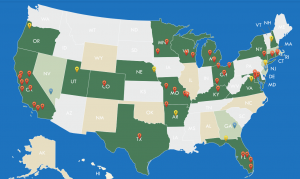


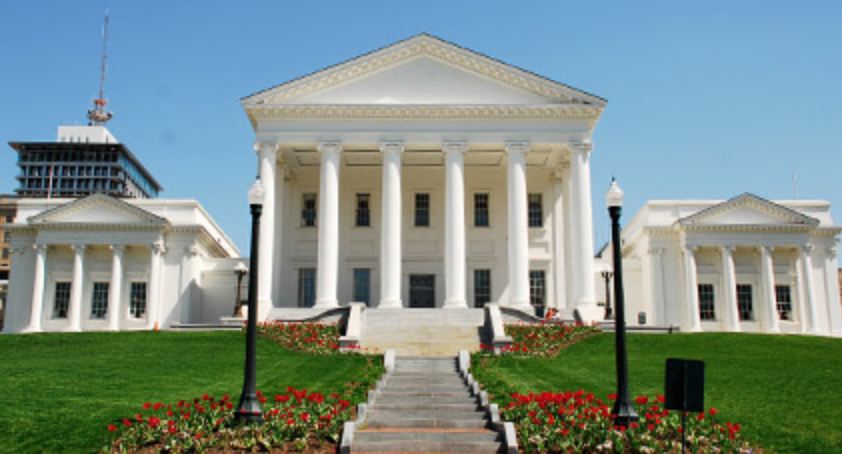






 Guest Blogger: Abby Johnson, Abacus Property Solutions (VAEEC Member – Individual)
Guest Blogger: Abby Johnson, Abacus Property Solutions (VAEEC Member – Individual)